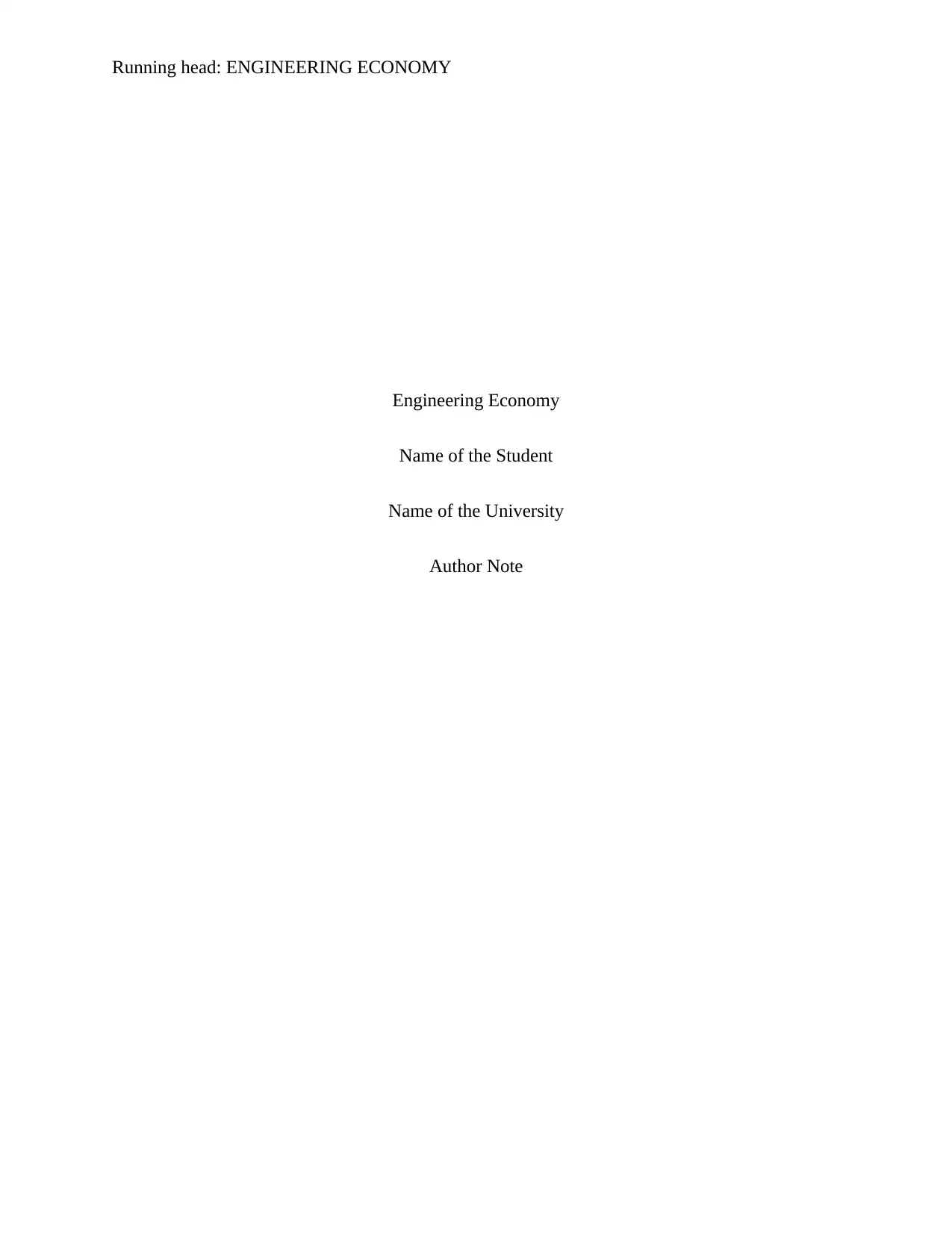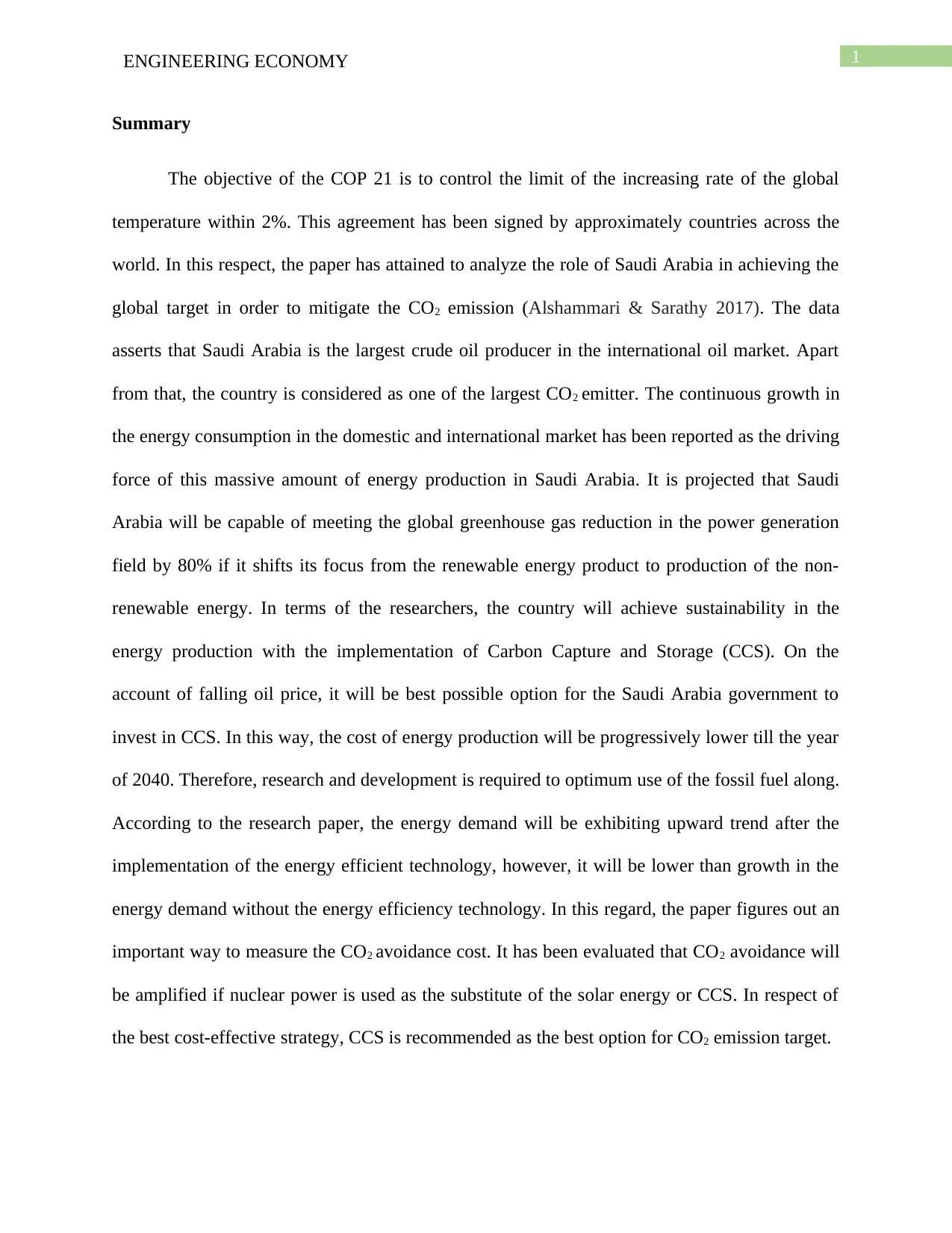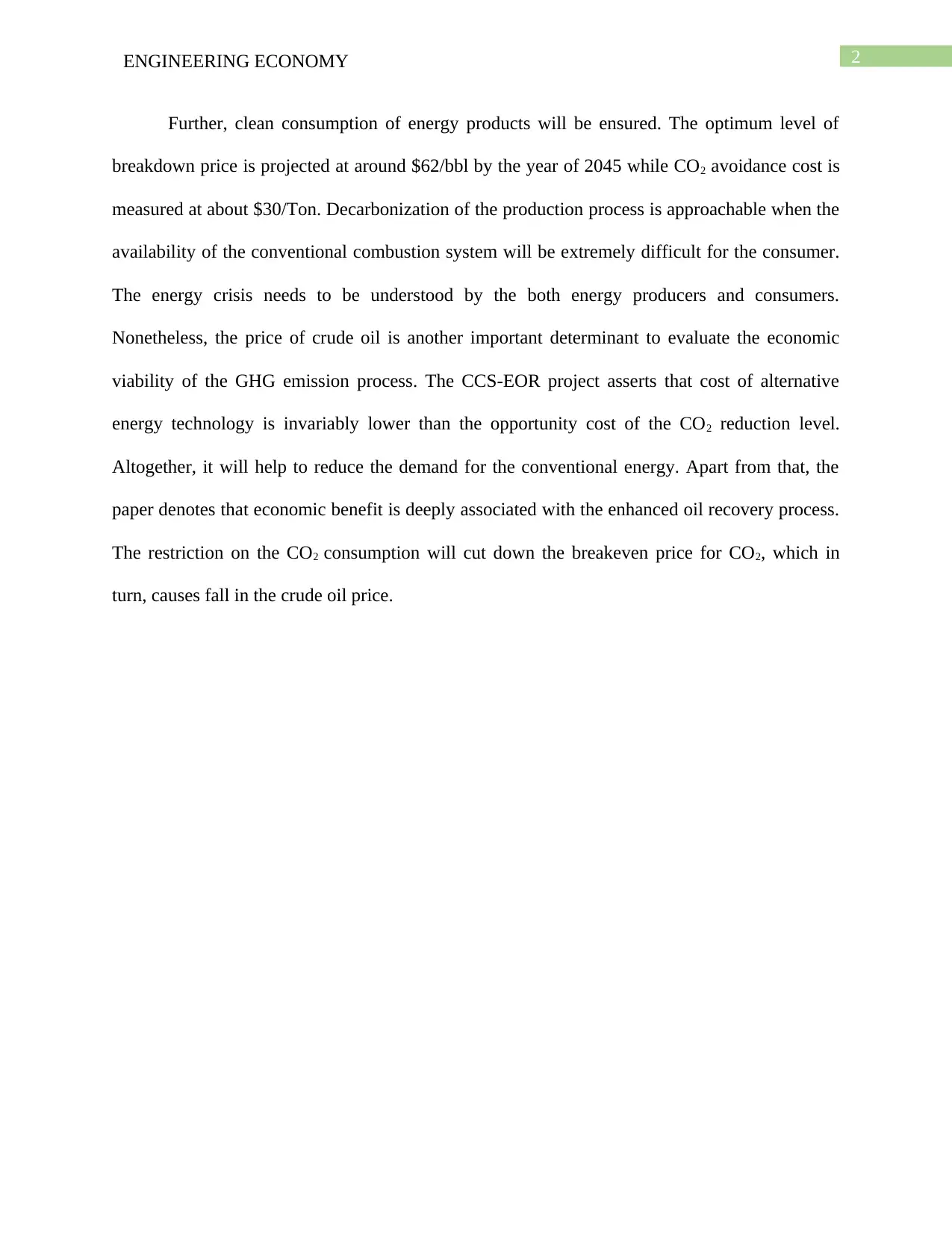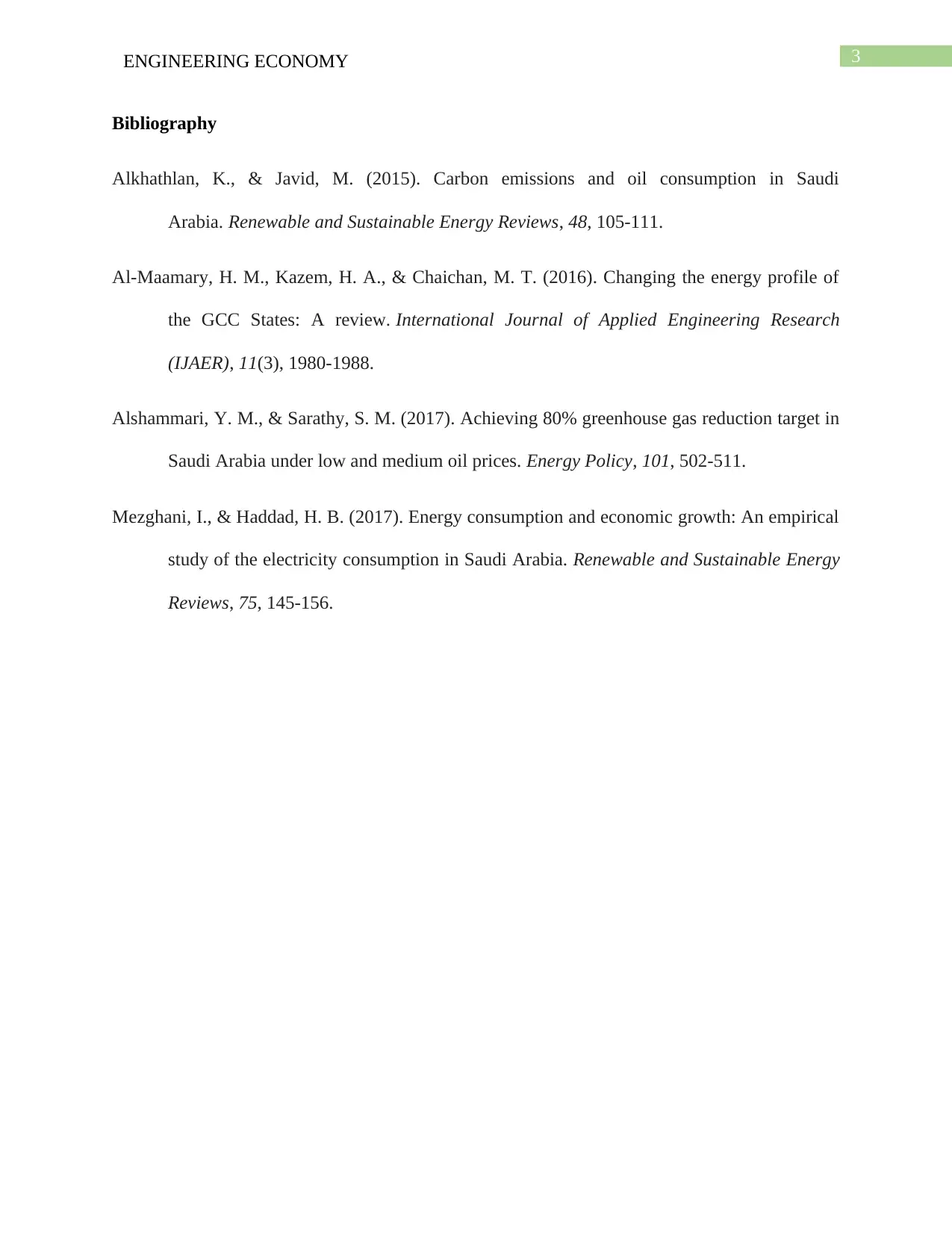Analysis of Saudi Arabia's Role in Global CO2 Emission Reduction
VerifiedAdded on 2022/09/06
|4
|731
|21
Report
AI Summary
This report examines Saudi Arabia's role in global greenhouse gas reduction, particularly focusing on the country's efforts to meet the COP 21 target of limiting the global temperature increase to within 2%. As a major crude oil producer and significant CO2 emitter, Saudi Arabia's energy policies and strategies are crucial for achieving global climate goals. The study analyzes the country's potential for reducing emissions in the power generation sector, highlighting the importance of transitioning from renewable energy sources to non-renewable energy, such as Carbon Capture and Storage (CCS). The report evaluates the economic viability of CCS, considering falling oil prices and the potential for reducing energy production costs. Furthermore, it explores the impact of energy-efficient technologies, the measurement of CO2 avoidance costs, and the role of nuclear power. The analysis suggests that CCS is the most cost-effective strategy for CO2 emission reduction, ensuring clean energy consumption and achieving a break-even price of around $62/bbl by 2045, with a CO2 avoidance cost of $30/Ton. The report emphasizes the need for research and development to optimize fossil fuel use and underscores the link between crude oil prices and the economic viability of GHG emission reduction processes. The findings indicate that restricting CO2 consumption will lower the breakeven price for CO2 and subsequently decrease crude oil prices, ultimately reducing the demand for conventional energy sources.
1 out of 4











![[object Object]](/_next/static/media/star-bottom.7253800d.svg)